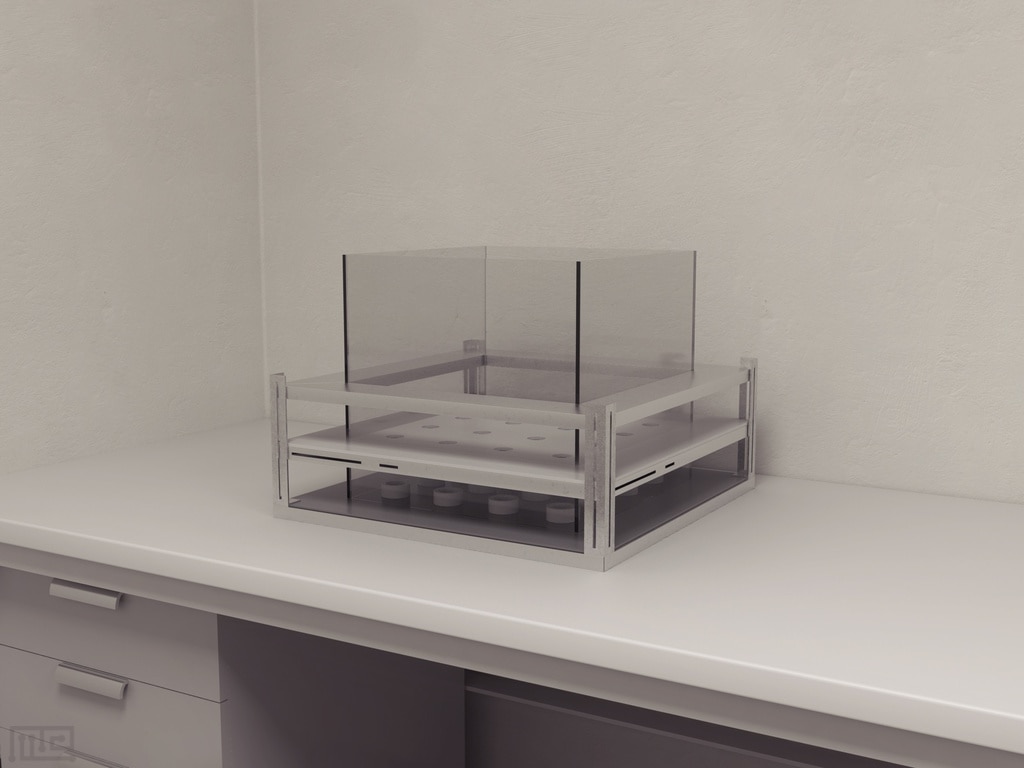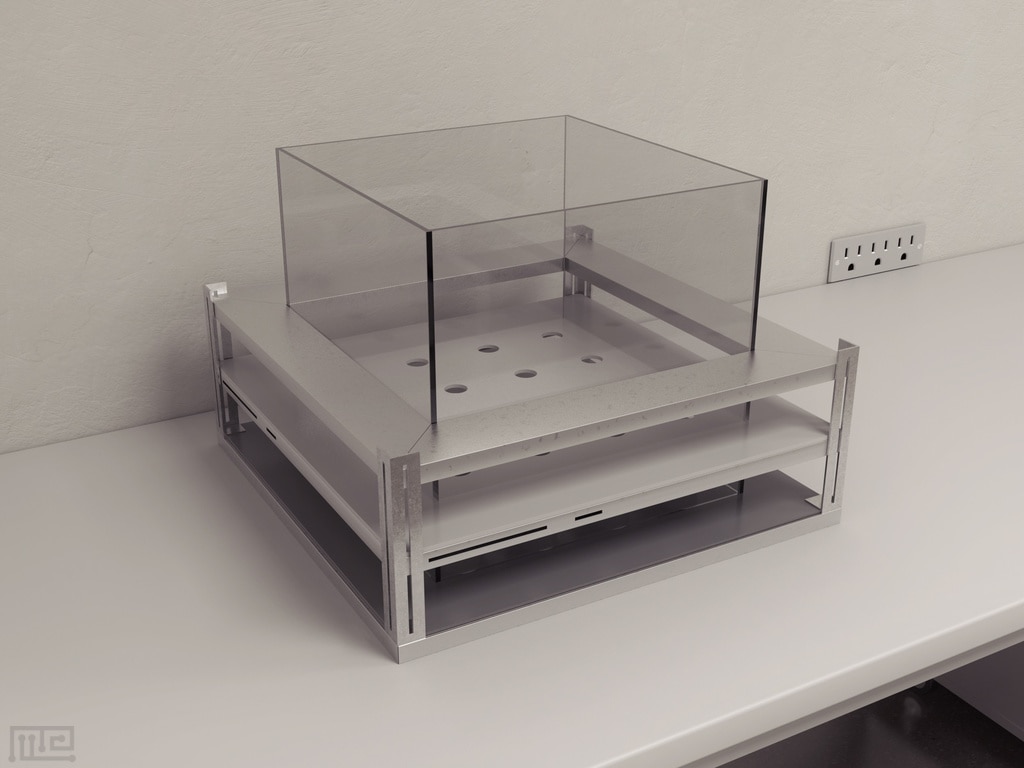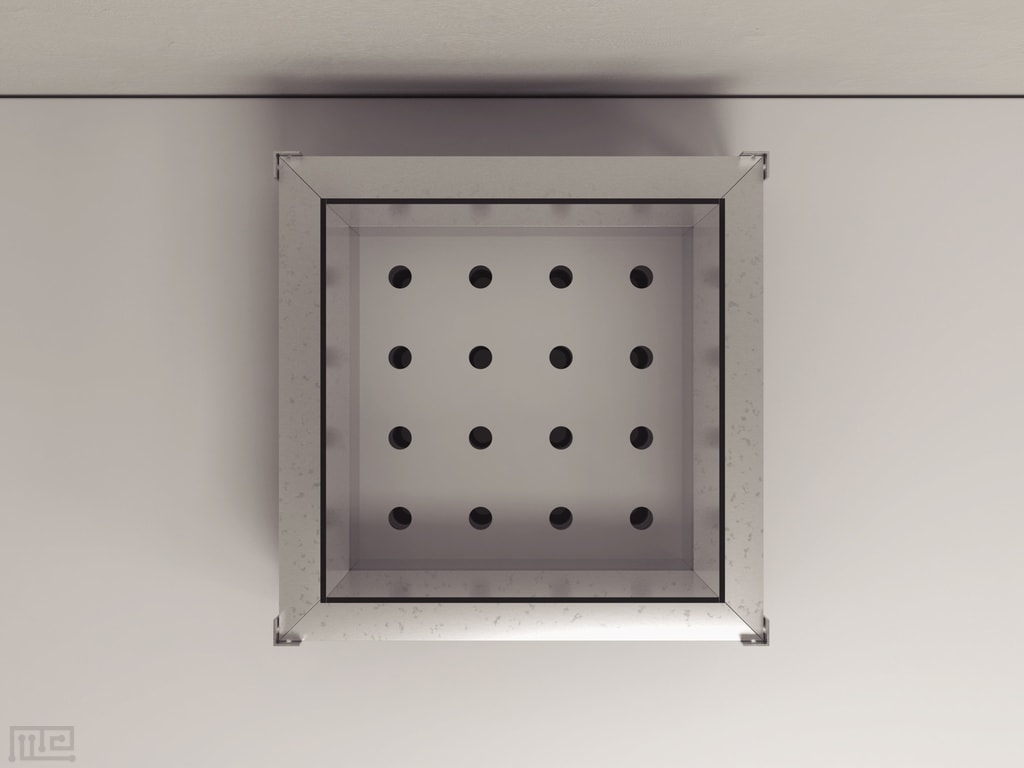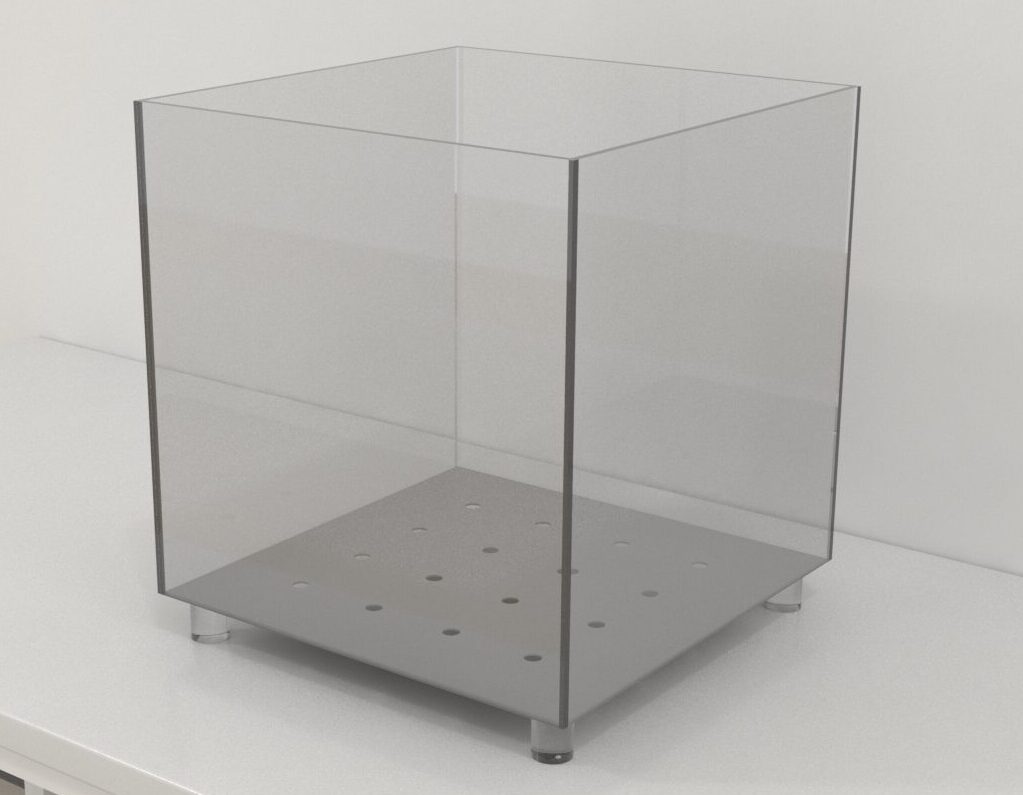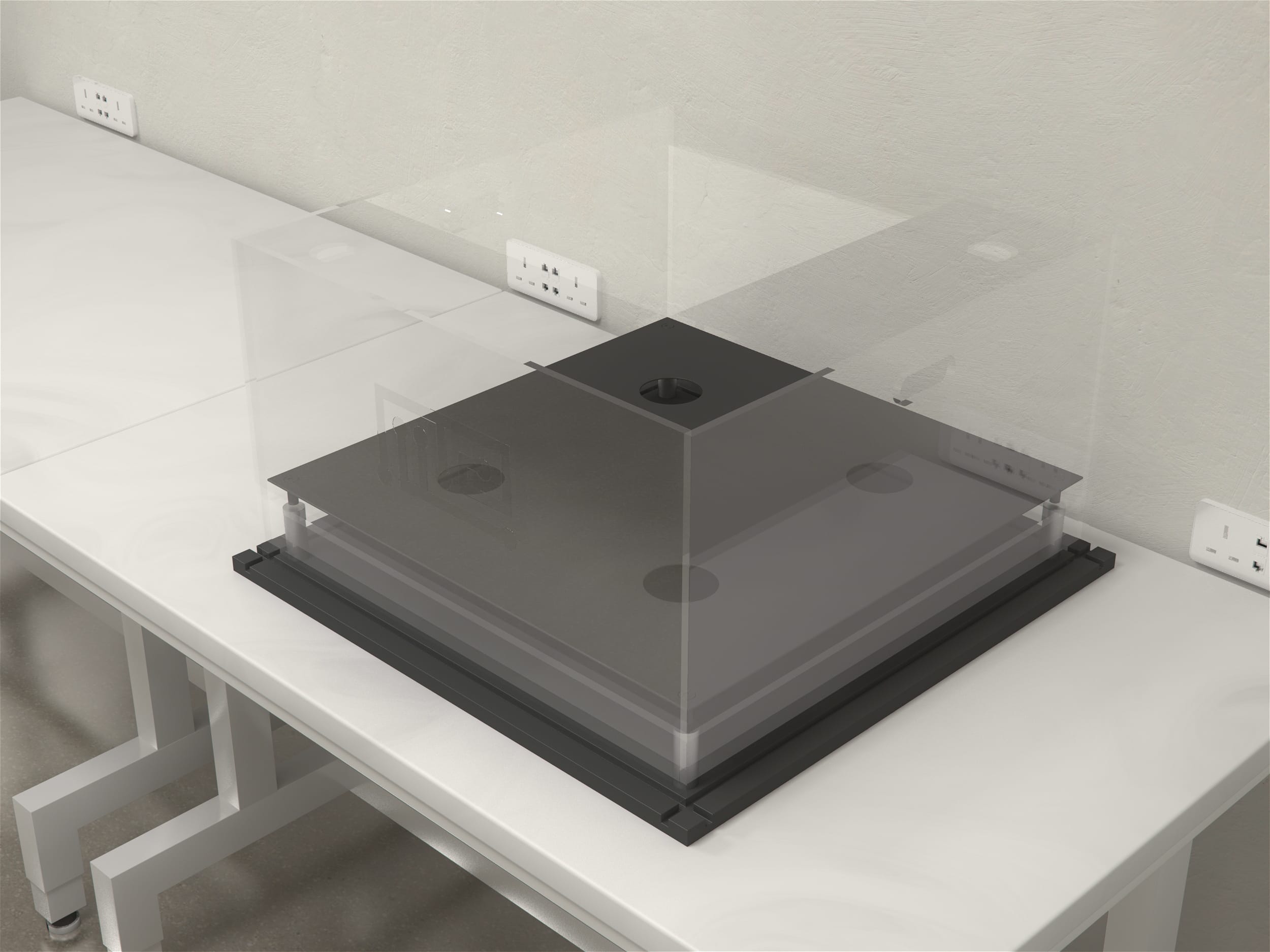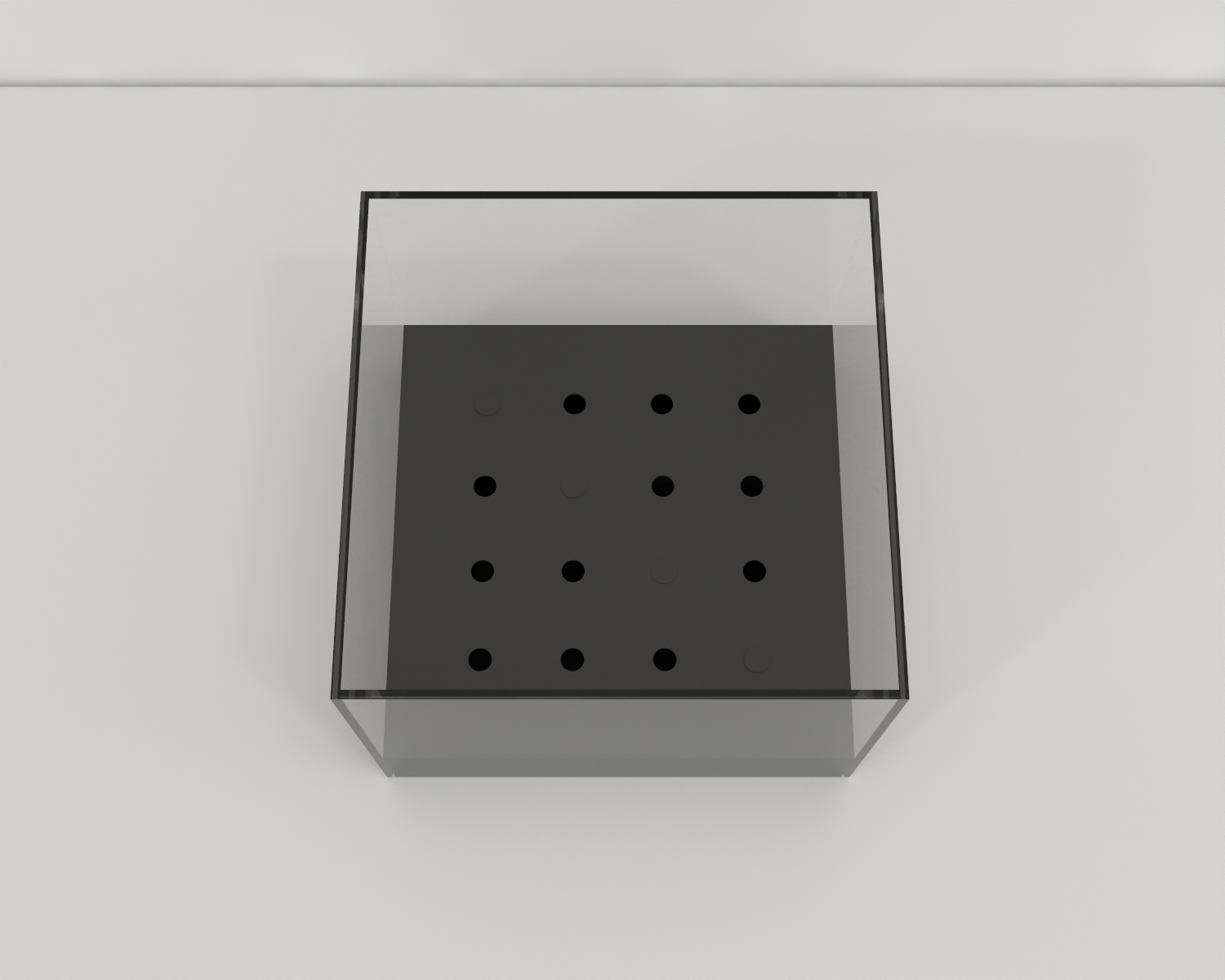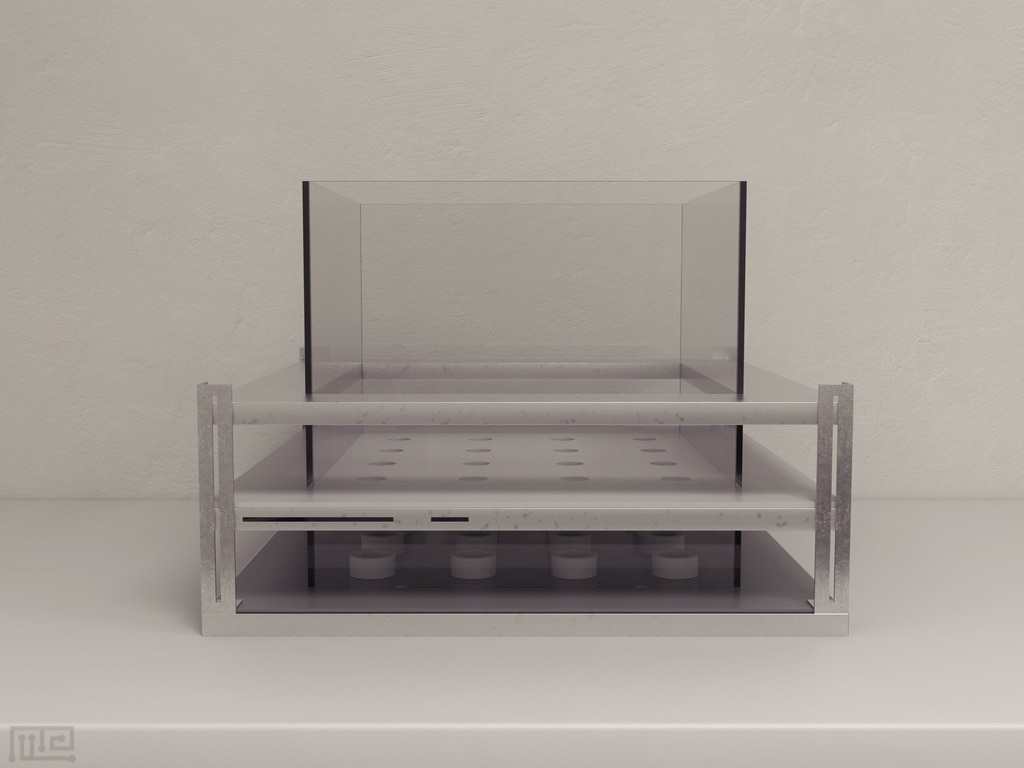
Description
The MazeEngineers automated hole board system allows for easy detection of nose poke behavior in the context of an open field environment. The apparatus that we provide allows for maximum flexibility including the ability to interchange acrylic walls for colored walls, nose pokes, and floor interfaces. Your order comes with the conductor software to allow for easy control of the hole board apparatus as well as logging of data during your automated experiment. Get the best results for maximum convenience.
Features
Take advantage of Neuralynx, Ethovision Integration, SMS and Email integration with the Conductor Science Software. No I/O Boxes Required
Price & Dimensions
Mouse
$ 3490
Per Month- Length: 40cm
- Width: 40cm
- Height: 35cm
- Diameter Holes: 3cm
- 16, 9, 4 floor Hole Board included in order
- 16 Nose poke detection cups included in your order
- Clear wall set is included in your order. Black and white wall sets are optional.
Rat
$ 3995
Per Month- Length: 60cm
- Width: 60cm
- Height: 45 cm
- Diameter Holes: 5cm
- 16, 9, 4 floor Hole Board included in order
- 16 Nose poke detection cups included in your order
- Clear wall set is included in your order. Black and white wall sets are optional.
Accessories
Odor Boxes

- Nutmeg
- Rosemary
- Cinnamon
- Clove
- Red Thyme
- Ginger
- Vanilla
- Lemon
- Raffia
- Foam.
Shop Our Related products
Documentation
The Hole board test is designed to measure neophilia or neophobic behaviors through the analysis of subject actions such as head dipping, rearing, and locomotion (Greenburg., 2003; Brown et al., 2008). First developed in the 1960s as an alternative to the open field test, the walls of the hole board test prevent escape while the floor is perforated to allow the subject to head dip to explore (Boissier et al., 1965; File et al., 1975; Brown et al., 2008). Modifications to the hole board test can be made to assess different behaviors such as the addition of odor cues for odor preference studies (Werknecke et al., 2015) (see above).
This apparatus can be used to study exploratory and anxiety-related behaviors in pharmacological research (Gupta et al., 2015; Pandey et al., 2016), neurological development, cognition, and neurological conditions (Segabinazi et al., 2020; Haagensen et al., 2013; Havas et al., 2016), and psychology and psychiatric research (Verbitsky et al., 2020).
References
- Christopher L. Kliethermes, John C. Crabbe. Pharmacological and genetic influences on hole-board behaviors in mice (2006). Pharmacology Biochemistry and Behavior.85 (1): 57-65.
- Boissier JR, Simon P. Action de la caféine sur la motilité spontanée de la souris [Action of caffeine on the spontaneous motility of the mouse]. Arch Int Pharmacodyn Ther. 1965 Nov;158(1):212-21. French.
- Brown, Gillian R; Nemes, C (2008). The exploratory behavior of rats in the hole-board apparatus: Is head-dipping a valid measure of neophilia?Behavioral Processes.
- File SE, Wardill AG. Validity of head-dipping as a measure of exploration in a modified hole-board (1975). Psychopharmacologia. 44(1):53-9
- Gupta D, Radhakrishnan M, Thangaraj D, Kurhe Y. Pharmacological evaluation of novel 5-HT3 receptor antagonist, QCM-13 (N-cyclohexyl-3-methoxyquinoxalin-2-carboxamide) as an anti-anxiety agent in behavioral test battery (2015). J Pharm Bioallied Sci.7(2):103-108.
- Greenberg R. The role of neophobia and neophilia in the development of innovative behavior of birds (2003). In: Reader S.M., Laland K.N., editors. Animal Innovation. Cambridge University Press; Cambridge, pp. 175–196.
- Haagensen AM, Klein AB, Ettrup A, Matthews LR, Sørensen DB. Cognitive performance of Göttingen minipigs is affected by diet in a spatial hole-board discrimination test (2013). PLoS One. 8(11):e79429.
- Havas D, Hutter-Paier B, Ubhi K, et al. A longitudinal study of behavioral deficits in an AβPP transgenic mouse model of Alzheimer’s disease (2016). J Alzheimers Dis ;25(2):231-243. doi:10.3233/JAD-2011-101866
- Pandey DK, Devadoss T, Modak N, Mahesh R. Antidepressant & anxiolytic activities of N-(pyridin-3-yl) quinoxalin-2-carboxamide: A novel serotonin type 3 receptor antagonist in behavioral animal models (2016). Indian J Med Res. 144(4):614-621.
- Segabinazi, E et al. “Comparative overview of the effects of aerobic and resistance exercise on anxiety-like behavior, cognitive flexibility, and hippocampal synaptic plasticity parameters in healthy rats.”(2020). Brazilian journal of medical and biological research = Revista brasileira de pesquisas medicas e biologicas vol. 53,11 e9816,
- Verbitsky, A., Dopfel, D. & Zhang, N. Rodent models of post-traumatic stress disorder: behavioral assessment (2020). Transl Psychiatry 10, 132.
- Wernecke, K. E., & Fendt, M.The olfactory hole-board test in rats: a new paradigm to study aversion and preferences to odors (2015). Frontiers in behavioral neuroscience, 9, 223.

